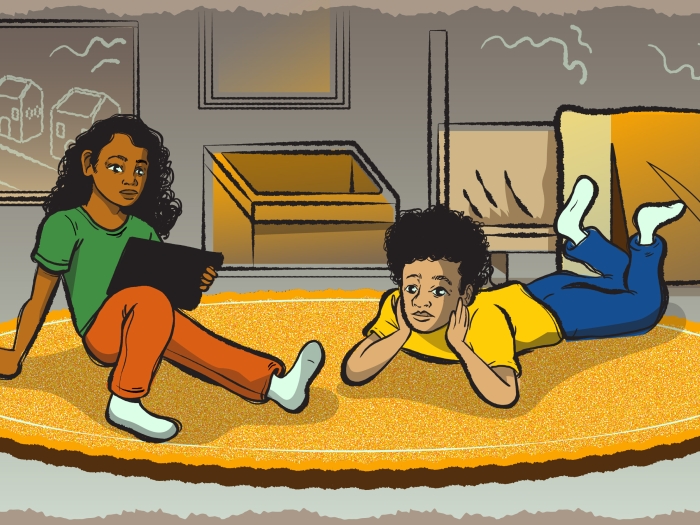An expert’s tips and advice to build your child’s confidence.
5:00 AM
Author |
Pill swallowing can be a difficult skill to learn for many kids and adults alike. But for pediatric psychologist, Jennifer Butcher, it's a common stressor she helps many parents and their children overcome.
"For a child, the thought of swallowing a pill can seem like a big challenge, and the pill may look huge to them," said Butcher. "However, parents can remind their child that they swallow bites of food that are much bigger than their pills. Their esophagus (food tube) is also wider than their pills and stretchy to let it slide right down."
The trick?
"It's getting the pill into the right spot to slide down, like a water slide rider."
Common mistakes parents make when teaching their kids to take pills? Forcing them to practice at high pressure times, like when the child has to take a pill in order to get well, or allowing their emotions into the situation (which in turn impacts the child's stress levels). Another is when parents start their child practicing with something too large that makes them feel that they can't do it, and hence, makes them lose confidence
Butcher also shares that parents of children with development delays or feeding and/or swallowing issues should seek a professional's help.
MORE FROM MICHIGAN: Sign up for our weekly newsletter
"They need more help, more time or different strategies to learn how to do this. Their parents should talk with their providers to see if there is a child life specialist, speech pathologist, occupational therapist or pediatric psychologist available to help with this."
She says this applies to all parents, though, struggling on the pill-swallowing front.
"The same is true for any family who tries on their own and fails. More support is always available!"
For those embarking down the pill-swallowing road, Butcher shares her expertise.
7 easy steps for teaching your child how to take pills
1. Practice for only 5 minutes at a time
Practice should only be a few minutes at a time, with the goal at the end of each session to have your child feeling more confident each time.
"You don't want to make this something that feels like work to them," said Butcher.
She recommends starting and practicing at low pressure times, not when you're in a hurry or trying to squeeze it in.
Another tip? Try starting to practice while your child is still on liquid medications. Moving to pills may be easier in the long run (more portable, no refrigeration needed), but at this point your family can still practice together in a stress-free way.
2. Plan to give stickers, or another small reward, for practicing
Butcher recommends families give their child stickers as a reward for their hard work learning.
"Parents should show confidence that their child can do it and learn it. It just takes practice, and remind your child that they can move as slowly as they need."
3. Have them sit up straight in a chair and take a sip of water
To start, have them sit down. sit straight up and drink a little water.
"You want to teach them that their throat and their tongue are like the water slide and the pill is like the rider," said Butcher. "So what they want to do is wash the rider down the slide."
4. Start with a small sprinkle
Butcher says to place one tiny sprinkle on the middle of their tongue and then take a drink of water to wash it down.
"If they're able to do that, you can move onto slightly larger candy. If they aren't able do that, you stick with that [size] until they're successful," Butcher explained.
5. Once successful, try a slightly larger candy
Have them practice until they're able to swallow that size a few times. Once they've mastered swallowing the tiny sprinkle, move onto a bigger sprinkle or a mini M&M, depending what they're ready for.
6. Once successful, move up to practicing on the size of the pill they need to take
They should gradually move up sizes; no big size leaps, says Butcher.
"Start with a sprinkle. Then maybe a larger sprinkle or Nerd candy. Then a mini M&M, and then maybe ¼ of a Tic Tac or Good and Plenty. Slowly, and gradually, do bigger sizes until you end up at the size of their pill."
Have them do that a couple more times, says Butcher, as you want them to end feeling good about their skills.
"The reason for ending on success is to help their confidence. We want them to feel like they can do it, so ending with success leaves them feeling a sense of accomplishment."
7. Don't force any step, and revert back to the last size they were comfortable with practicing on
If your child is panicking or not feeling comfortable swallowing the larger candies, remember that this is normal.
"Don't force it," Butcher explained. "Instead, have them move back to the last size they were successful at."
And starting small, and ending on a positive note is critical, says Butcher.
"The idea is that they go back and practice again the next day starting with the size that they were successful with the day before and working up further. So, each time that they practice, they end at a bigger size until they achieve the size of their pill."
Like Podcasts? Add the Michigan Medicine News Break anywhere you listen to podcasts.

Explore a variety of health care news & stories by visiting the Health Lab home page for more articles.

Department of Communication at Michigan Medicine
Want top health & research news weekly? Sign up for Health Lab’s newsletters today!





